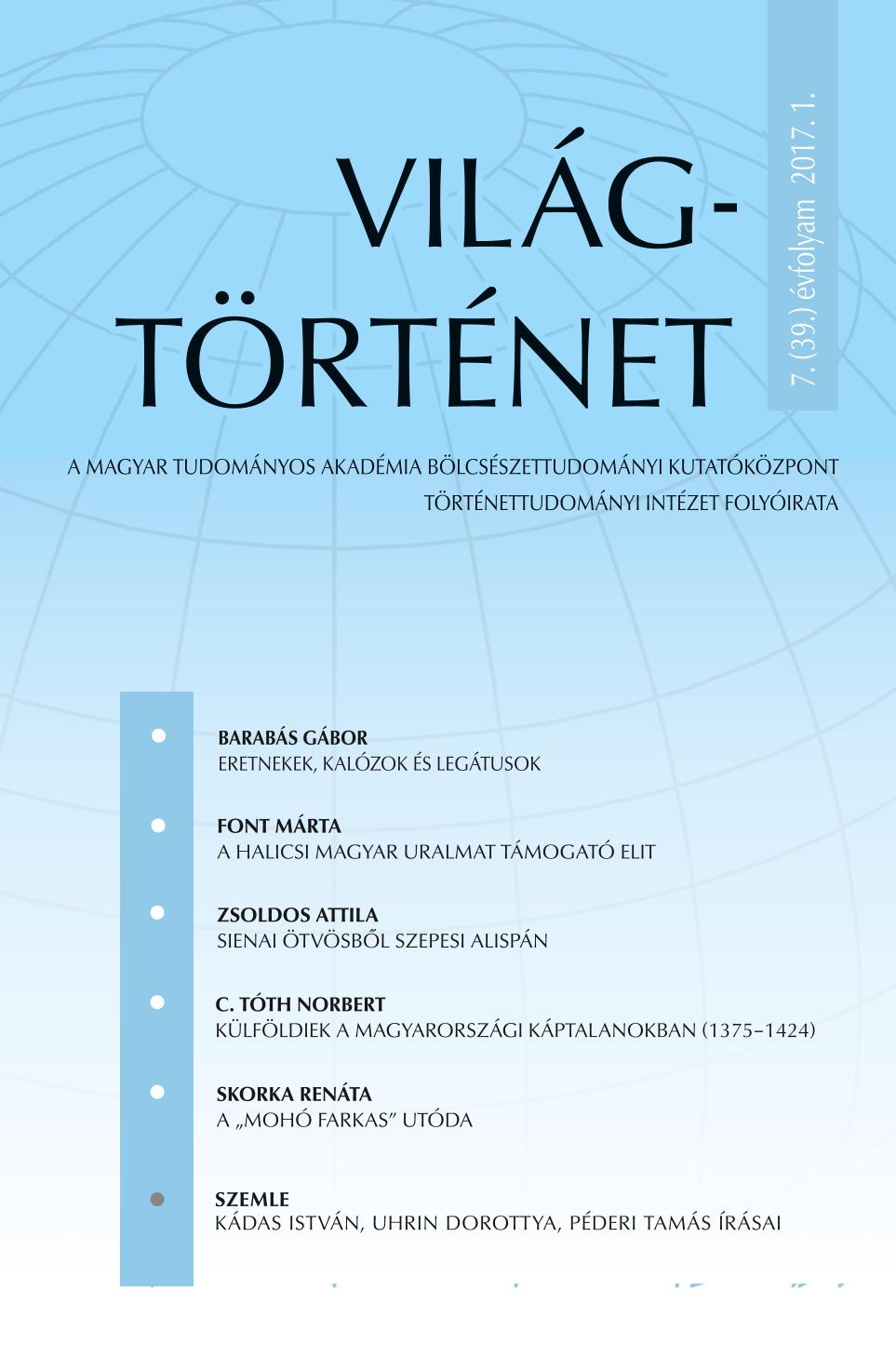Külföldiek a magyarországi káptalanokban (1375–1424)
Foreigners in the Hungarian Chapters (1375–1424)
Author(s): Norbert C. TóthSubject(s): 13th to 14th Centuries, 15th Century
Published by: Magyar Tudományos Akadémia Bölcsészettudományi Kutatóközpont Történettudományi Intézet
Summary/Abstract: The research of the middle ranks of the Hungarian church hierarchy is still based on the thesis of Elemér Mályusz, who thought that the proportion of foreign canons in the Hungarian chapters remained fairly high until the early fifteenth century, thanks to their university education. Consequently, the canons of “Hungarian” origin were virtually forced to reoccupy the benefices with the help of king Sigismund’s 1404 decree. In the present paper, I have contrasted the evidence about the origins of beneficiaries in thirteen cathedral and collegiate chapters – those of Bács, Bosnia, Eger, Esztergom, Győr, Kalocsa, Kő/Szerém, Nyitra, Pécs and Vác, Pozsega, Pozsony and Titel – with the thesis of Mályusz. The research has clearly proved that the views of Mályusz, already nuanced by József Köblös, have to be radically modified in the light of the new evidence. As neither the proportion nor the number of foreign beneficiaries was considerable in the period investigated, there was no need to officially restrict their access to Hungarian church benefices, and nothing hindered the local clerics from obtaining them. Thus, the royal decrees enacted in the decade between 1394 and 1404 were clearly not motivated by such aims.
Journal: Világtörténet
- Issue Year: 2017
- Issue No: 1
- Page Range: 75-92
- Page Count: 18
- Language: Hungarian

